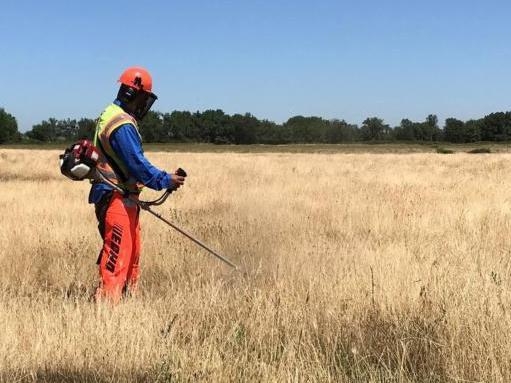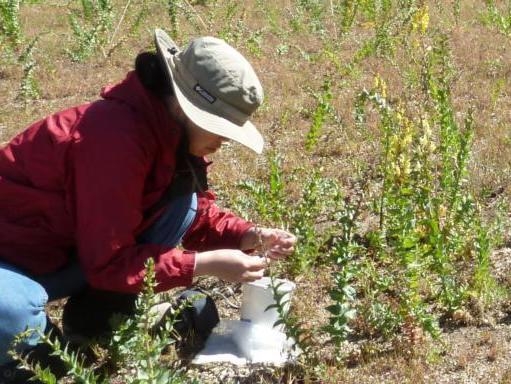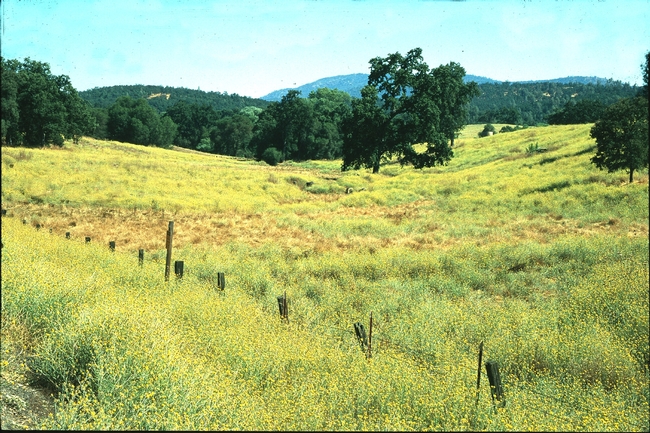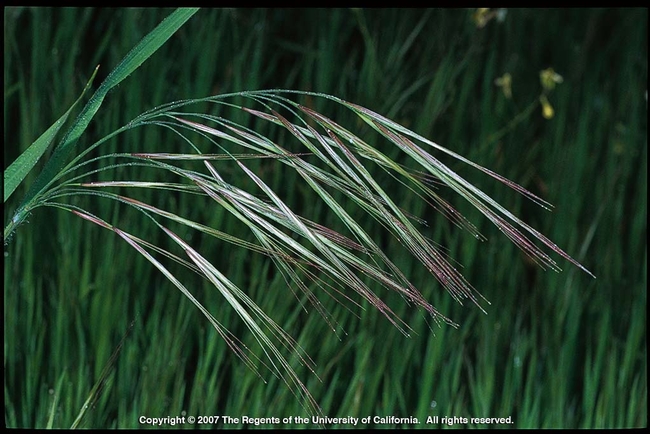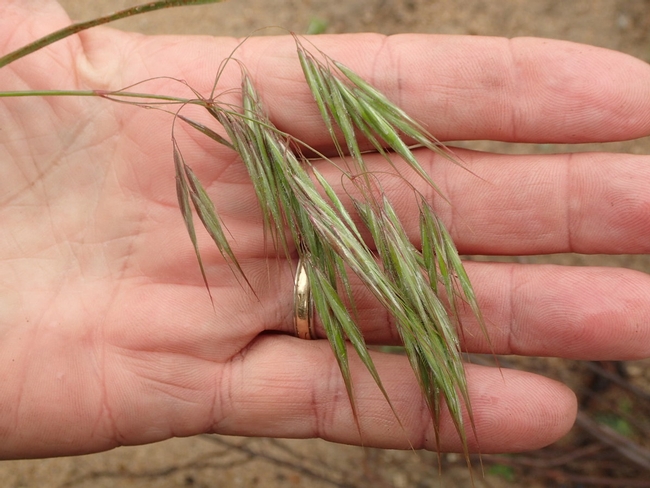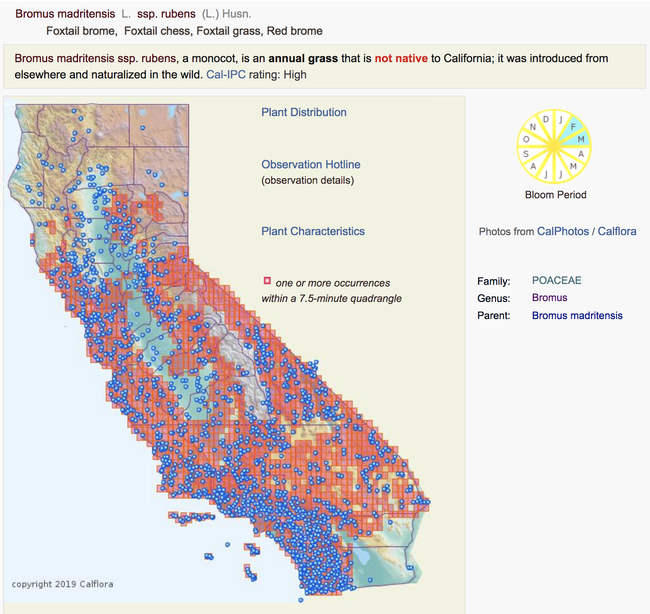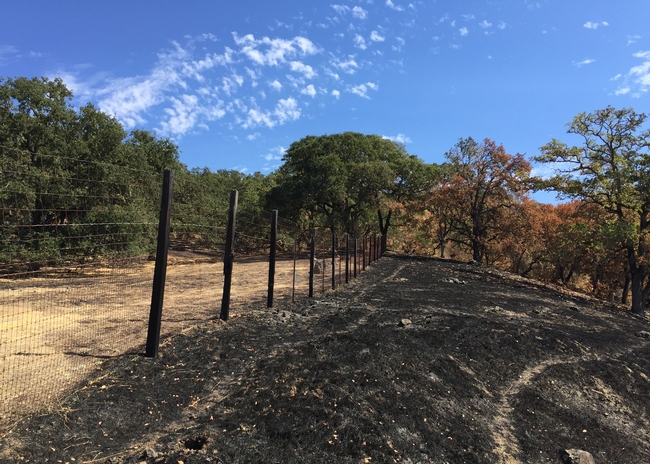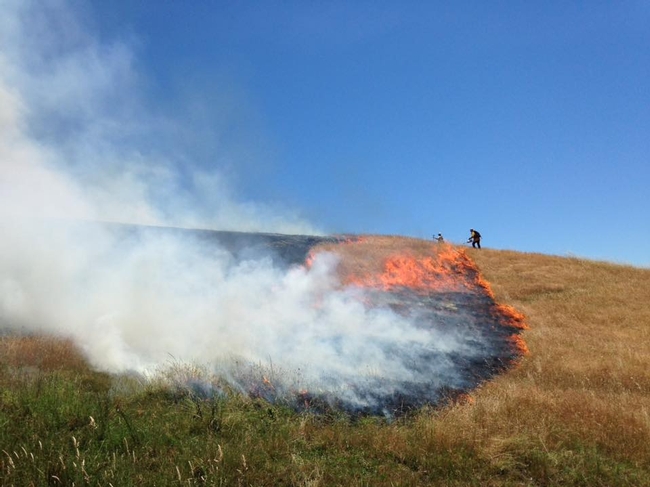Posts Tagged: weeds
UC launches WeedCUT, a new online tool to manage invasive weeds in wildlands without herbicides
California has abundant wildlands — forests, rangeland, open areas, wildlife refuges and national, state, and local parks — that need protection from invasive plants. Invasive plants affect all Californians by increasing wildfire potential; reducing water resources; accelerating erosion and flooding; threatening wildlife; degrading range, crop and timberland; and diminishing outdoor recreation opportunities. According to the California Invasive Plant Council (Cal-IPC), more than 200 identified plant species harm California's wildlands.
Cal-IPC and the University of California Statewide Integrated Pest Management Program (UC IPM), with funding from the California Department of Pesticide Regulation (DPR) Alliance Grants Program, developed two resources that provide land managers access to the latest information on non-herbicide practices for managing weeds in wildlands. Best Management Practices for Non-Chemical Weed Control is a free downloadable manual. The same information has been incorporated into an interactive online tool called WeedCUT (Weed Control User Tool: weedcut.ipm.ucanr.edu).
"We anticipate WeedCUT will increase the use of more mechanical, physical, or biological practices, and potentially result in the reduction of herbicides used to manage wildland invasive weeds," said area IPM advisor emeritus Cheryl Wilen. "Best Management Practices for Non-Chemical Weed Control and WeedCUT were developed so land managers can become more knowledgeable and skilled in the use of non-herbicide methods as part of an IPM program.”
Best Management Practices for Non-Chemical Weed Control provides comprehensive descriptions of 21 commonly used non-herbicide weed control techniques and biological control agents for 18 invasive plants. Each chapter is the synthesis of research and on-the-ground knowledge from practitioners about non-herbicide methods. The chapters describe how a technique is best applied, the types of invasive plants and environmental conditions where it is most effective, and what its shortfalls might be. Environmental, cultural, and human safety risks are highlighted to help support the safe and effective use of these methods.
WeedCUT is the online version and can be used to learn about the different non-herbicide management methods, including the section on biological control. To filter through the database and learn which management practice to consider for a particular site and invasive plant type, a simple interface allows users to pick characteristics that describe their site and invasive plant problem. The tool then filters through the database to display the practices ranked by efficacy (excellent, good, fair, poor or ineffective). As in the manual, use of the technique and potential hazards are covered.
Best Management Practices for Non-Chemical Weed Control and WeedCUT are designed to be the go-to resources for practitioners that complement their conventional weed management work with non-herbicide techniques or are restricted in their use of herbicides. Both resources will help practitioners manage weeds more effectively.
“Many experts in the field have contributed to create the manual and WeedCUT. It has been exciting to see these techniques described and reviewed so carefully. We're looking forward to seeing land managers, as well as all folks fighting weeds, incorporating the information from the manual and WeedCUT into their work,” said Jutta Burger, science program director and project lead with Cal-IPC.
While the manual and tool focus on non-herbicide methods, the hope is future funding can be found to continue the work and integrate herbicide options online.
"Land managers typically use both herbicide and non-herbicide methods, alone and in combination, to manage invasive plants in wildlands," said UC Cooperative Extension advisor and UC IPM-affiliated advisor Tom Getts. "A tool that combined both herbicide and non-herbicide methods would guide land managers to determine the most effective overall management program for their particular site."
The Heat is On: Soil Solarization
The days are long and the temperatures are high. This is a great time to solarize the soil in the Central Valley as a way to manage annual weeds and...
Johnsongrass in organics: Mow it?
Yes, mow it! Mowing works to at least prevent seed spread and regular mowing will weaken rhizomes. Seed establishment has the greatest potential for...
California’s bad romance with Bromus fuels wildfire
When wildfires burn in California, people often call them forest fires or brushfires, but the odds are high that an invasive weed is an unrecognized fuels component, says a UC Agriculture and Natural Resources scientist.
“We have all of the nasty non-native Bromus species here in California, and these weeds are key drivers of increasing fire frequency,” said Travis Bean, UC Cooperative Extension weed science specialist based at UC Riverside.
The invasive, non-native Bromus species aggressively outcompete native plants, forming dense stands that grow fast and dry out quickly, becoming highly flammable. Fire can move rapidly through these dense patches of dry grass, especially during windy conditions or on slopes.
“When you have understory of dry Bromus or other weedy grasses, their ease of ignition can allow fire to spread from areas like roadsides where ignition sources are plentiful to more pristine native plant communities,” Bean said. “Additionally, these fast-moving fires can throw embers that allows the fire to jump long distances or even reach high into the air, igniting structures.”
Identifying fire fuel
Bean would like to see the fuels in wildfires identified so people have a chance to consider managing them to mitigate the increasing frequency of catastrophic wildfire across the state.
With training, citizen scientists such as California Naturalists could help cities, counties, utilities and government agencies identify the invasive plant species that fuel urban wildfires.
“On a landscape scale, I would focus on managing Bromus anywhere human-caused ignitions occur,” Bean said. “Resources for management are scarce, and these species are widespread and can't be controlled everywhere they occur. Roadsides, hiking trails, and campgrounds are critical areas where people can start fires that spread, so It makes sense to concentrate management there.”
Cheatgrass (Bromus tectorum) is widespread at higher elevations, while ripgut brome (B. diandrus) and red brome (B. madritensis spp. rubens), also called foxtail brome, are pervasive at lower elevations. Along with other invasive winter annual weeds, they have successfully replaced large areas of the native vegetation in Southern California.
“When I talk to land managers about these species, they recognize that some areas will have to be sacrificed and it may not be possible to eliminate these species from the landscape,” Bean said. They are prioritizing areas with smaller invasive populations where there is an actual chance to eliminate them, or are managing larger populations for containment so they don't spread.”
Timing is everything
The key to reducing the spread of invasive, non-native Bromus species or any annual weed is preventing the plants from producing seeds, Bean said. “Whatever control method you chose, if deployed too early or too late, you gain nothing for considerable expense.” Too early and the plants may simply resprout, while too late and they will have already set seed and further contributed to next year's weed crop.
Herbicide is an effective and inexpensive means of control, though many prefer non-chemical methods. Hand pulling can be effective in small areas, but is discouraged for large patches due to the sheer amount of labor required and risks of actually spreading the weed seeds.
Another way land managers can try to prevent the weeds from spreading is by mowing or grazing with goats, sheep or cattle, Bean said, adding that using livestock can require more intensive management and proper timing is critical.
“For mowing and grazing, the key is to wait until the plants have started to flower, but the seeds are not mature,” Bean said. “If you mow when there's mature seed, you'll just spread the seed and make the problem worse. And once the seedheads mature, grazing animals won't eat it.”
Prescribed fire is another option for containing invasive grasses, but is generally discouraged as there's a very high chance of exacerbating the problem. These Bromus species are very fire-adapted and tend to increase following burns. Prescribed fire should only be used by professional land managers. If this strategy is used, a burn plan, permits and training are essential. If not done correctly, prescribed burns may escape control and become wildfires, producing smoke that impairs visibility on highways, impacts air quality and human health, and damages native vegetation.
“Timing is everything,” Bean said, explaining the temperature difference between the plant and soil surface. “The grass has to be dry enough to carry fire, but not so dry that the seeds have fallen from the plant to the soil surface, where temperatures are much cooler than just a few inches up in the air where the seedheads are. Some research has shown this strategy to have been successfully used for certain invasive grasses like barb goatgrass (Aegilops triuncilias), but is not recommended for Brome species.”
He expects the changing climate to lead to more invasive plant species. “Invasive plants can be more resilient during drought and can quickly bounce back when rain returns, overwhelming natives,” Bean said. “And invasive species are often key drivers of wildfires and increasing fire frequencies and intensities, which prevents the recovery of native plants.“
A Pain in the Asteraceae - Identifying Important Winter Weeds in Alfalfa
The first step in developing a successful weed management program is being able to properly identify the species that are infesting a field. But why?...


